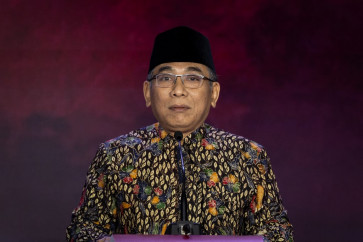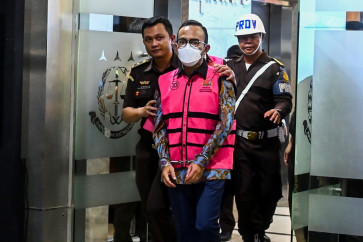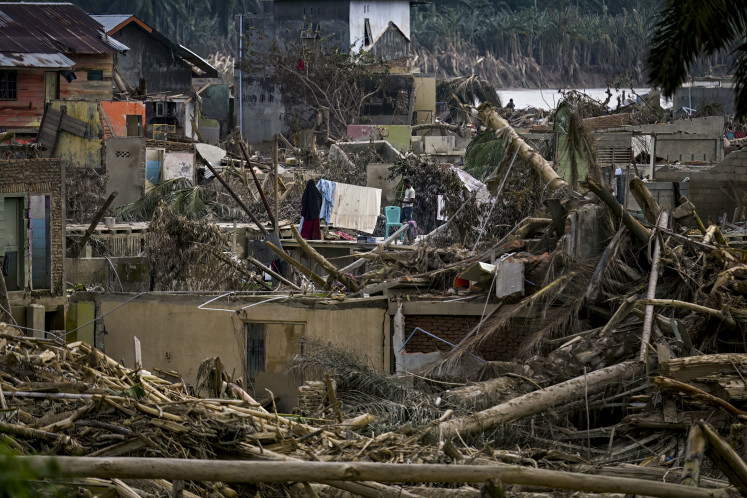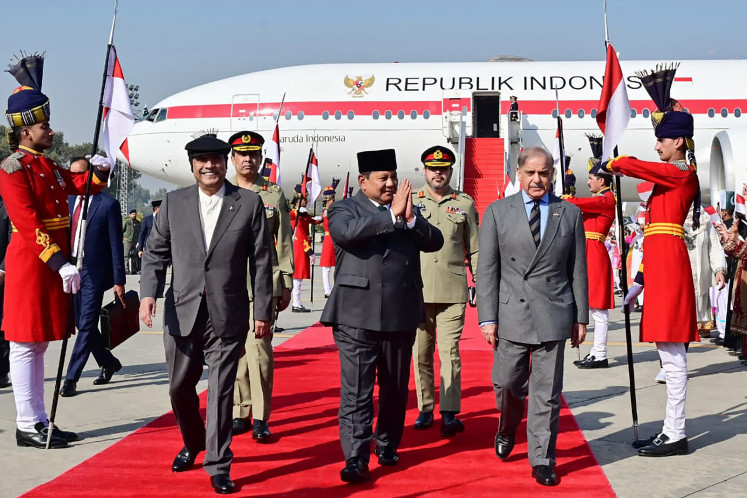Popular Reads
Top Results
Can't find what you're looking for?
View all search resultsPopular Reads
Top Results
Can't find what you're looking for?
View all search resultsAnalysis: Looking for better infrastructure financing
Since the global financial crisis in 2008, the Asian region has been the most economically resilient in the world and the motor of the global economy
Change text size
Gift Premium Articles
to Anyone
S
ince the global financial crisis in 2008, the Asian region has been the most economically resilient in the world and the motor of the global economy.
In the last six years, emerging Asia (especially China) has taken over the role of developed countries in stimulating the flagging global economy.
Yet Asia's enormous potential has not been supported by the infrastructure necessary to long-term economic growth.
High-quality infrastructure attracts investment. Moreover, the potential for high inflation can be reduced, particularly in archipelagic countries like Indonesia, and sufficient infrastructure facilitates market access to better information, ultimately driving efficiency in the economy.
The quality of infrastructure in Asia countries is still relatively low compared with other regions in the world. According to the Global Competitiveness Index (GCI) survey, the average index of competitiveness for the quality of regional infrastructure in emerging and developing Asia is at 3.55, lower than the index of competitiveness for the quality of global infrastructure at 4.23.
According to data from the Asian Development Bank (ADB), to be able to improve the quality and quantity of infrastructure, the region will require massive long-term investment (2010-2020) of US$ 8.22 trillion, or $0.75 trillion a year.
The sector requiring the greatest investment is electrical infrastructure, which needs $4 trillion, followed by transportation at $2.9 trillion, telecommunications at $1 trillion and water and sanitation at $280 billion.
Indonesia is expected to account for the greatest infrastructure financing needs in the ASEAN region (2010 to 2020), with $450 billion. The portion of infrastructure financing as a share of gross domestic poduct (GDP) needs to be increased from 3 percent (2012) to 6.2 percent.
In line with ADB calculations, the Indonesian government has designed a long-term infrastructure development program.
The urgent need for adequate infrastructure has encouraged the new government to focus on six strategic areas in the field of infrastructure and connectivity: building maritime connectivity in the form of 24 new ports and their means of support; building 5,500 kilometers of railways in Sumatra, Kalimantan, Sulawesi and Papua; adding 35,000 megawatts of electricity supply; building mass rapid transportation (MRT) systems in several large cities in Indonesia; building 25 dams across Indonesia to increase food production; and building 24 new airports to attract 24 million foreign tourists by 2019.
In the national medium-term development plan 2015'2019, infrastructure financing needs in Indonesia reach Rp 5.52 quadrillion, equivalent to Rp 1.10 quadrillion per year, with a balanced source of funding from government and the private sector (banks and non-banks).
By September 2014, banking finance to the infrastructure sector had increased about fourfold to Rp 347.6 trillion from Rp 88.8 trillion in 2007. However, banks are limited in their capacity to disburse loans because of tight liquidity, as reflected in the high loans-to-deposit ratio (LDR), which has reached 90 percent.
Such conditions require Indonesia to seek infrastructure funding alternatives aside from banks. In two other countries in Asia, Malaysia and India, the role of the private sector in infrastructure funding is relatively large. In Malaysia, government spending on infrastructure funding is relatively low, as the government encourages the private sector to play a larger role.
One successful effort made by the Malaysian private sector in infrastructure financing is collecting funds through the debt capital market. An example more similar to Indonesia is India, where infrastructure financing comes mostly from the public sector. Aware of fiscal constraints in infrastructure funding, the Indian government has enacted regulations to encourage public-private partnerships (PPP), with the portion of bank loans to infrastructure financing increasing from 2 percent in 2000 to 14 percent in 2012.
The need for infrastructure financing is growing in India, encouraging the government to involve the private sector. One of the efforts involves widening the availability of the infrastructure fund base by issuing bonds for sale to long-term investors (insurance companies and pension funds).
Alternative financing for infrastructure seems indeed to be driven by the non-bank financial sector, such as the capital market. At the Mandiri Investment Forum 2015, the chairman of the Financial Services Authority (OJK) said that the need for infrastructure financing was great and long-term, and thus could not be met by the banking sector alone.
This is, therefore, a very good opportunity for capital markets to contribute more to the national economy in terms of infrastructure financing. On the supply side, the development of capital markets is related to the number of listed companies on the stock exchange. Unfortunately, listed companies number only around 500.
On the demand side, it is very important to increase the participation of domestic retail investors. Indonesia's huge population offers a tremendous opportunity for capital market penetration. However, efforts to expand the role of capital markets in financing infrastructure must also be accompanied by the expansion of products and financial instruments that can be attractive to investors.
Further discussion on which infrastructure financing model is the best suited to the Asian region, including Indonesia, will take place at a Bank Mandiri event, the 2015 IIF Asia Summit on May 6-7. There will be several panel discussions on the global economic outlook, infrastructure financing, financial inclusion, global regulatory structures, financial integration and investing in Asia. Around 300 participants are expected to attend the event, which will offer the latest information on Asian economies, as well as analysis of future opportunities and challenges.
__________________________
The writer is a senior industry analyst at Bank Mandiri.










